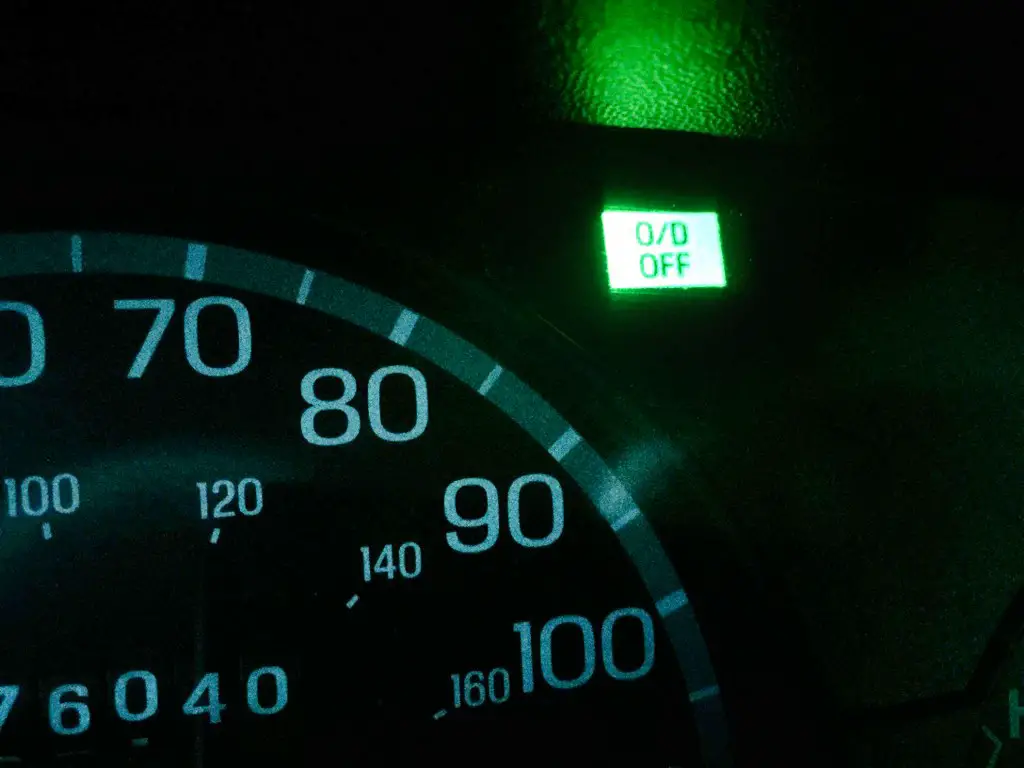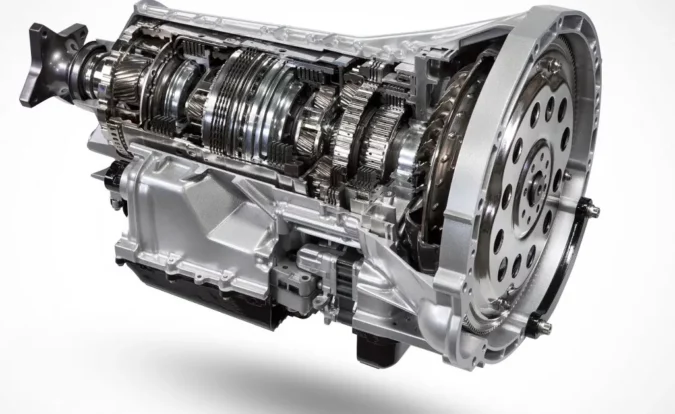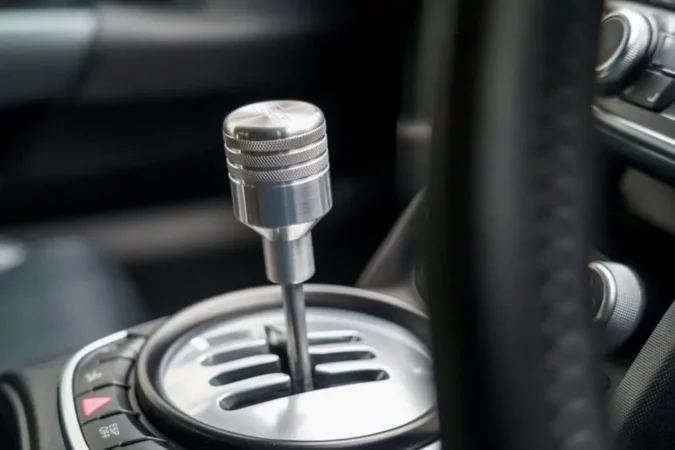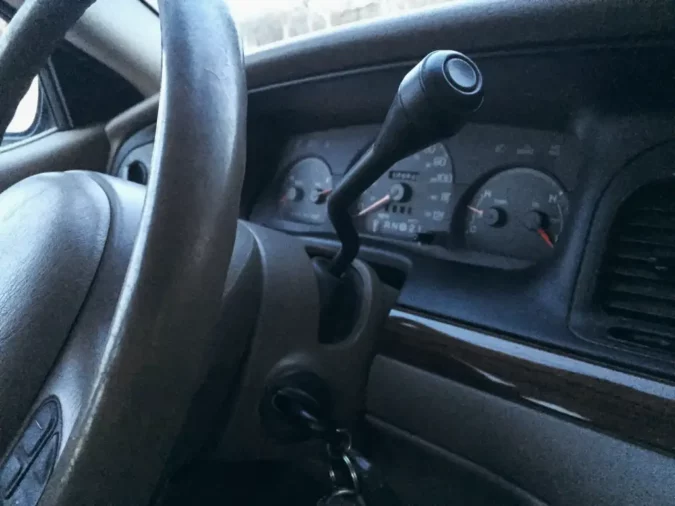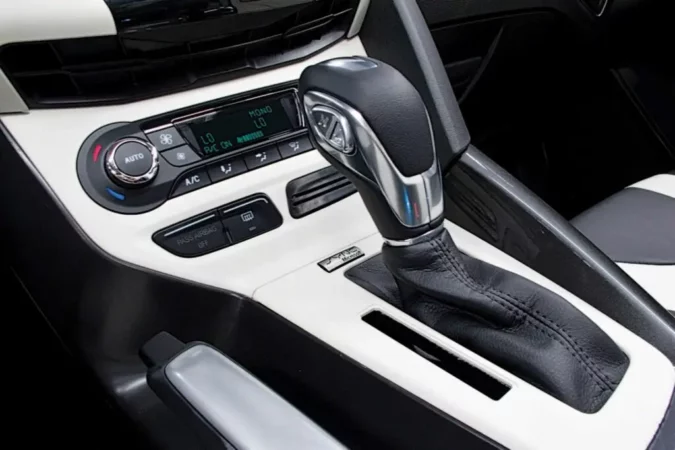Have you come across the O/D off message and you want to learn more about the O/D off meaning? Well, if that is the case, then you are in the right place because, in this article, there will be a lot to cover on this topic.
- Car Transmission
- Transmission Types
- Overdrive
- Overdrive Off
- Pros & Cons
- When Turn On
- When Turn Off
- Conclusion
- FAQs
Nowadays cars are full of different features. There are tons of dashboard symbols and different meanings and figuring out what a certain light means can sometimes be a real problem because not all of us are experienced with cars and know all the ins and outs. Some of us need to do deep research in order to understand a bit more about what a certain light means.
And research shouldn’t scare you at all. Research is key if you want to use a certain feature as you should. Because figuring things out on your own can become a problem. Especially if you are not into cars. And this article is specifically dedicated to helping folks determine what the O/D system is and the meaning behind it. As well as how to use it.
First, we are going to learn what is car transmission. Then, we are going to cover the types of transmission in cars that are out there. We will cover both manual and automatic. Then we will cover what overdrive is and the benefits of using this system. As well as the O/D off meaning. So, if you want to learn more, follow along.
Car Transmission
Now before we delve into more complex topics such as the O/D off meaning, let’s first take a look at what is a car transmission in general. There are a lot of people who suffer similar issues and are not into cars. So, we feel obliged to cover this topic and elaborate more thoroughly on what is a transmission and in simple words dissect this information.
So, what is a car transmission? Well, you can imagine transmission as a big energy-converting box. The goal of the transmission is to convert the rotational energy of the crankshaft into torque.
For example, your engine has a crankshaft. And this crankshaft rotates at 600 revolutions per minute at minimum. You just cannot transfer this energy directly to the wheels.
If you try to do so, the driveshaft will snap into pieces (thus, necessitating a drive shaft repair or a drive shaft replacement – and think about the cost to replace a driveshaft). So, in this case, you use a complex mechanical device that has gear ratios that are designed to work with the engine RPM. And covert the RPM into torque.
So, when this procedure is done, the wheels start to spin on the car. So, this is why the transmission in your car plays a crucial role when it comes to moving your car around. Driving a car without a transmission is impossible.
And inside the transmission, there are gears that make this possible. These are metal gears that engage and disengage whenever there is a need to do so. Also, the type of engaging and disengaging depends on what type of transmission this is.
And more about the types we are going to cover in the following chapters. Once we clear the types we will discuss overdrive and understand the O/D off meaning, in addition to learning what does O/D mean in a car.
Types Of Transmissions
Now that we learned what a transmission is and what it does, we can now move on and learn more about the different types of transmissions that exist out there.
Knowing the types will help you when it comes to figuring out the overdrive feature later on. That’s why we are going to cover the two main types of transmissions that are out there and then discuss the overdrive feature, as well as the O/D off meaning. So, let’s dive into the topic.
O/D Off Meaning, Transmission Types #1: Manual Transmissions
Now let’s cover the first type of transmission before we dive into the O/D off meaning. And the first type of transmission is the manual transmission. So, what does this mean?
Well, this means that with this type of transmission, you are basically engaging and disengaging the transmission manually. This is a labor-intensive process that involves a lot of work from the driver. And perfecting this process takes a lot longer compared to automatic transmissions.
How it works is really simple to figure out. First, you press the foot on the clutch pedal, and then by doing so, you basically disengage the transmission from the engine.
For engaging and disengaging the transmission there is a special device known as the clutch. The clutch in general is a disc that has friction material.
So, when you disengage the clutch, this friction material grips the flywheel that rotates together with the engine.
Then this rotational force is transferred to the gears. And inside there are a lot of metal gears that do the magic and are engaged at different speeds.
There is also an overdrive function on a lot of these transmissions as well. And this function allows you to adjust the gear ratio to achieve better efficiency. But more on the overdrive function, we are going to cover later on in the article when we are going to discuss the O/D off meaning.
The important thing is that manual transmissions are a lot of fun to drive. Especially if you own a high-performance vehicle. Manual transmissions allow you to get a shift at the desired RPM range. And put a smile on your face in the process. Now let’s move on to the second type of transmission.
O/D Off Meaning, Transmission Types #2: Automatic Transmissions
We covered manual transmission cars, now let’s learn more about automatic transmissions and their operation. What is an automatic transmission?
Automatic transmission is the transmission of choice in the US market. The vast number of cars here are running automatic transmissions.
This type of transmission does everything on its own. You just put the gear lever into Drive and the transmission goes through the gears automatically. Thus the name is automatic.
This makes this type of transmission very easy to operate. But the ease of operation makes the transmission very complex on the inside. In fact, automatic transmissions are far more complex compared to manuals.
They are not only torque-converting boxes. But also they are hydraulic devices. Inside the transmission, there is a constant flow of hydraulic fluid that puts pressure and activates solenoids on the valve body.
And each solenoid activation is a gear change. And there are a lot of these solenoids on each automatic transmission (which can be tough if you’re diagnosing the symptoms of bad shift solenoids, or need to worry about the cost of a new transmission solenoid).
This makes automatic transmissions very expensive to service. And most people just replace the transmission and avoid spending a ton of time to bother with repairing it.
This is why when you purchase a used vehicle, the transmission and how this component shifts should be your top priority.
What is good about automatics, there are multiple ways to alter their work. So, carmakers can adjust the work of the transmission with a press of a button.
There is the sport button to activate sport mode in cars, and there is also the overdrive button. But what is overdrive? Let’s learn more about that before we start discussing the O/D off meaning. Once we clear that, we will cover the benefits of using this feature.
What Is Overdrive
Now that we learned what is transmission and the different types of transmissions that are out there. And learned also how these transmissions work. Now it is time to move on and cover overdrive and learn what this feature is.
Many people who are not into cars have an assumption that overdrive is a high-performance feature. Something like a sport button.
But let me tell you that this feature is completely the opposite. This is not a sport button. This is a feature that is designed to alter the gear ratios in your car in the completely opposite way.
Overdrive is equipped on both manual transmission cars, as well as on automatic transmission cars. This feature is usually activated with the press of a button. Usually, this button has the letters O/D, or simply its name “overdrive”.
Every manufacturer places this button in a different place. So, if you cannot locate the button, it is best to consult your owner’s manual.
Or if you don’t have the owner’s manual by your side, you can just go online and learn more about your specific model and how to activate it.
In a situation when you cannot locate the overdrive option, you highly likely don’t have this feature on your car.
And unfortunately, there is no way to enable it if the feature did not come from the factory on the car. Unless you get a transmission that has this feature available. Since this feature is basically built into the transmission itself. But what does this feature do?
This feature improves the fuel economy of your car. This means that whenever you have it on, the car will have better gas mileage. But what is the O/D off meaning? More on that next.
O/D Off Meaning
Now that we learned what is overdrive and learned that this is a feature that improves your fuel economy, let’s now focus on other stuff and learn more about the O/D off meaning. What does this light mean for your car?
Well, this is a light that turns on your cluster. This light indicates that the overdrive function on your car is turned off. This means that at the moment your car is not using overdrive. Simple as that.
This means that you don’t have a feature that widens the transmission shifting range at the top end. So, the RPM on the car at speeds higher than 50 mpg will be quite high.
So, if when using overdrive the RPM drops to 2,000 or lower, with O/D off, your RPM will be high at 5,000 or more. And in this situation, the engine will be very stressed and your car will be very inefficient.
So, you see where we are going. Overdrive is basically turning your car into a very efficient machine that runs perfectly at highway speeds. This is why we recommend that if you drive on the highway, you should always have this feature turned on.
Because if you don’t have this feature on, your car will be really inefficient. But what about the pros and cons of this feature? Let’s learn more about that next.
Overdrive Pros & Cons
Now that we covered the O/D off meaning, let’s move on and learn more about the pros and cons of this system.
As with any other feature, there are positives and negatives of overdrive as well. So, you should be aware of them before you try to use this feature on your car. Now let’s first cover the positives and then the negatives of this overdrive function.
O/D Off Meaning – Benefits Of Turning Overdrive On
Now that we covered the O/D off meaning, we can start with the benefits of having the O/D on. What are the pros that you can expect from this feature turned on in your car?
Well, the biggest pro will probably be fuel economy. The fuel economy will improve quite significantly if you use this feature on your car. Since the main purpose of this feature is to improve fuel economy.
And the use of this system will be most evident when it comes to cruising at speeds above 50 mph. So, if you drive a lot on the highway, by using this system, you will notice how your gas bill is reduced by quite a bit compared to the situation when you are running your car without overdrive.
Also, the engine will be a lot quieter compared to when you don’t use overdrive. The engine will be extremely quiet at cruising speeds because the RPM will drop significantly.
So, if your car runs at 70 mph, the engine will spin at about 2,000 more or less. Which is basically the average engine speed that benefits the most when it comes to fuel economy.
And running your engine at low RPM most of the time will also improve the lifespan of the engine itself. So, you can expect the engine life to be quite a bit longer compared to the situation where you don’t use overdrive and you let your car run on high RPM.
This is why you should always use overdrive on the highway and don’t be too shy to press the button. Your car, as well as your wallet, will benefit from this.
But what about the cons of turning this system off, there are cons as well right? More on that next.
O/D Off Meaning – Downsides Of Using Overdrive
Now that we discussed the O/D off meaning, as well as the pros of having overdrive on your car, now let’s discuss some of the cons of this feature. Are there any cons to this feature?
Well, there are some cons. The biggest con is that this feature is not recommended to be used at low speeds.
Let’s say that you drive below 50 mph. In this situation, you don’t need overdrive. Having overdrive on while driving around town will result in completely the opposite thing.
The car will be sluggish and slow to react. It will drive really badly. You will not have that immediate throttle response that you get when you drive in normal mode.
This is why we will not recommend this feature for driving around town because it will not give you any benefits at all.
Not to mention that it will be detrimental to your transmission. Since you will be pushing the transmission very hard in these gear sets that are not intended for city driving. So, we learned the O/D off meaning, now let’s move on and learn when to turn on overdrive.
When To Turn Overdrive On
Now that we learned the O/D off meaning, let’s move on and cover when to turn overdrive on, and when to use the overdrive gear. What are the situations where you will benefit the most from turning on overdrive?
Well, let’s say that you drive on the highway at 60 mph and you don’t have overdrive turned on. In this case, the engine will run at high RPM.
You will also notice that your current fuel consumption is pretty much terrible. So, you locate the overdrive button and you press this button.
In this case, you will immediately start to experience a drop in the RPM but the speed will stay the same. The fuel economy will instantly improve and you will greatly benefit from this.
So, if you drive on the highway, turning this system on is a must if you want to avoid paying expensive bills at the gas station. But when to turn this system off? Let’s elaborate more about that in the next chapter.
When To Turn Overdrive Off
We covered the O/D off meaning, now let’s learn more about when to turn off overdrive. When this is recommended to be done?
Overdrive should be turned off in situations where you overtake someone on the highway. For overtaking other cars you need speed. And having this feature turned on will not result in good power delivery, which means that it will be difficult to overtake. And could take you in danger if you are not careful.
Also, if you climb over a hill, it is really recommended that you turn this feature off. Having this feature off will result in better performance and the car will pull a lot easier.
And lastly is the situation when you carry a load. So, if you are towing a trailer, it is recommended that you turn off the overdrive in order to get maximum performance from your engine.
Any situation where you need that extra responsiveness will benefit from turning overdrive off. That’s why you should not think twice before turning this feature off if you need more power from the engine and the engine to be able to run at a higher RPM.
Overdrive In Manual And Automatic Transmissions
Now that we know the O/D off meaning, let’s move on and compare the overdrive function of both manual and automatic transmissions. How do they differentiate from one another?
Well, in automatic cars, overdrive is turned on by default. When you reach the fifth or sixth gear, the overdrive function kicks in. You have a special button to turn this feature off to alter the system. Like in our case with the O/D off button.
While in cars that have manual transmissions, you have to engage the overdrive manually. You can do this when you hit the highest gear. For example, gear number six. When you shift in this gear, you just engage overdrive and the car starts to drive at lower RPM and the engine runs more quietly.
O/D Off Meaning: In Conclusion…
In this article, we have covered quite a bit when it comes to the O/D off meaning. First, we discussed what is a car transmission and what are the different types of transmissions out there.
Once we cleared that out of our way, we covered the overdrive function and learned what O/D off meaning is. As we cleared that, we covered the pros and cons of this feature, as well as when to use overdrive and when not to use overdrive.
FAQs About O/D Off Meaning
Now let’s answer some frequently asked questions.
What Is Overdrive
Overdrive is a function that alters your transmission at higher gears. This function when engaged, drops the engine RPM, so the engine runs more efficiently. This feature prevents engine wear and is also quite good for your fuel economy.
What Does Overdrive Do
Overdrive is a feature that is engaged at higher gears. At highway speeds to be more specific. This feature alters the work of the transmission, improving the fuel economy in the process and also preventing engine wear. So, if you drive a lot on the highway, this feature is very useful to have if you want to avoid engine wear and improve gas mileage.
What Does O/D Off Mean In A Car
The O/D off meaning is that this overdrive system is turned off. You need to activate the system if you want to use it. So, for this purpose, you will have to locate the button for this system and then activate it if you want to use it.
When To Use Overdrive
Overdrive should be used only on the highway. Let’s say that you travel at 50 mph or higher, in this case, you have to use overdrive in order to get the best possible fuel economy from your car.
Should Overdrive Be On Or Off
This really depends on the conditions. Let’s say that you go uphill, you want to overtake, or you carry a load. In this case, overdrive should be off. On the other hand, if you are cruising at 50 mph constantly, you should have this system on.
What Does Transmission Do In A Car
The transmission is a big energy-converting box. This device is converting the rotational energy of the crankshaft into torque. And this torque is then sent to the wheels.

